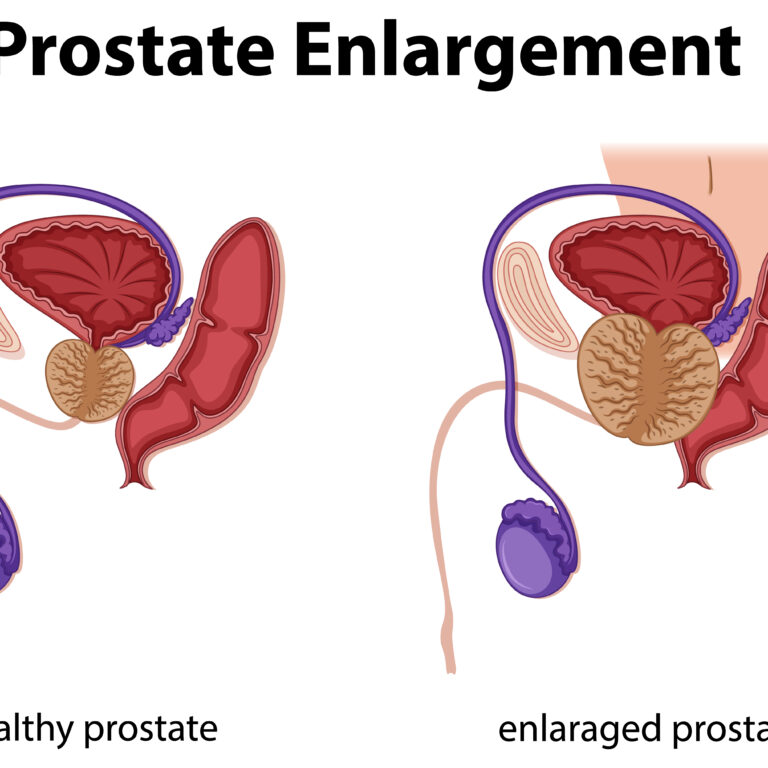BDSM Safety: Essential Practices for a Secure Kink Experience

Key Takeaways
- Importance of Safety: Safety is paramount in BDSM to prevent physical injuries and emotional distress, ensuring a positive and consensual experience for all participants.
- Consent and Communication: Clear communication and informed consent are foundational principles that guide all BDSM activities, emphasizing mutual respect and understanding.
- Risk Management Frameworks: Adhering to frameworks like SSC (Safe, Sane, Consensual) and RACK (Risk-Aware Consensual Kink) helps in effectively managing potential risks inherent in BDSM practices.
- Physical Safety Measures: Proper techniques, tools, and knowledge are essential to minimize physical risks during activities such as bondage, impact play, and sensory deprivation.
- Psychological Safety: Addressing emotional well-being through practices like aftercare and recognizing emotional responses ensures psychological safety during and after BDSM sessions.
- Integration into Relationships: Incorporating BDSM into relationships requires thoughtful negotiation, ongoing communication, and mutual understanding to enhance intimacy and trust.
Table of Contents
- Introduction
- Understanding BDSM Safety
- Core Principles of BDSM Safety
- Physical Safety Measures
- Psychological Safety
- Risk Management Strategies
- Safety Tools and Equipment
- Integrating BDSM Safety into Relationships
- Common Safety Mistakes and How to Avoid Them
- Conclusion
- Frequently Asked Questions (FAQs)
- References
Introduction
BDSM (Bondage, Discipline, Dominance, Submission, Sadism, and Masochism) is a multifaceted realm of consensual sexual practices that explore power dynamics, sensory experiences, and psychological connections between partners. While BDSM can offer profound emotional and physical satisfaction, it inherently involves activities that carry potential risks. Ensuring safety in BDSM is essential to prevent harm and promote a positive, consensual experience for all participants.
At SextoyForYou.com, we recognize the importance of safety in BDSM practices. Our commitment extends beyond providing high-quality products; we aim to educate and support our community in fostering safe and fulfilling BDSM experiences. This comprehensive guide delves into the essential safety practices, risk management strategies, and psychological considerations necessary for a secure kink experience.
Understanding BDSM Safety
BDSM safety encompasses a range of practices and principles designed to minimize risks and ensure the well-being of all participants. Safety in BDSM is not merely about avoiding physical injuries but also about maintaining emotional and psychological health. By prioritizing safety, individuals can engage in BDSM with confidence, trust, and mutual respect.
Why Safety Matters in BDSM
Engaging in BDSM activities involves exploring intense sensations, power dynamics, and sometimes physically restrictive practices. Without proper safety measures, these activities can lead to unintended harm, ranging from minor injuries to significant emotional distress. Safety protocols help in establishing clear boundaries, ensuring informed consent, and providing mechanisms to halt activities if they become overwhelming.
Research indicates that participants who prioritize safety in BDSM report higher levels of satisfaction and lower instances of negative experiences (Weiss, 2006). Therefore, integrating safety practices is not only ethical but also enhances the overall BDSM experience.

Core Principles of BDSM Safety
At the core of BDSM safety are principles that govern consent, communication, and risk management. These principles provide a framework for engaging in BDSM responsibly and respectfully.
Consent and Communication
Consent is the fundamental pillar of BDSM safety. It ensures that all activities are mutually agreed upon and that participants are aware of and comfortable with the actions taking place. Effective communication is critical in establishing and maintaining this consent.
Informed Consent
Informed consent involves a thorough understanding of the activities, potential risks, and the desires of all parties involved. This means that participants must discuss and agree upon the specifics of their BDSM activities before engaging in them. Informed consent is not a one-time agreement but an ongoing dialogue that continues throughout the BDSM interaction (Weiss, 2006).
Safe Words and Signals
Safe words are pre-agreed terms used to communicate the need to slow down or stop an activity. They provide a clear and unambiguous way to halt BDSM play if a participant feels uncomfortable or overwhelmed. In addition to verbal safe words, non-verbal signals can be established, especially in situations where verbal communication might be difficult (Joyal, Cossette, & Lapierre, 2010).
SSC vs. RACK
BDSM practitioners often adhere to one of two primary frameworks: SSC (Safe, Sane, Consensual) or RACK (Risk-Aware Consensual Kink). Understanding these frameworks helps in aligning BDSM practices with personal values and risk tolerance.
| Aspect | SSC (Safe, Sane, Consensual) | RACK (Risk-Aware Consensual Kink) |
|---|---|---|
| Focus | Emphasizes safety and sanity. Activities should be safe, participants should be in a sane state of mind, and all actions must be consensual. | Acknowledges that all activities carry inherent risks. Participants engage in kink with an awareness and acceptance of these risks. |
| Approach | Structured around minimizing harm and ensuring activities are within safe boundaries. | Emphasizes personal responsibility and informed consent, accepting that some level of risk is unavoidable. |
| Usage | Commonly used in mainstream BDSM communities to promote ethical practices. | Often preferred by those who engage in more intense or unconventional activities, recognizing that not all risks can be mitigated. |
Table 1: Comparison of SSC and RACK frameworks.
Both SSC and RACK prioritize consent but differ in their approach to managing risk. SSC is more prescriptive, focusing on creating as safe an environment as possible, while RACK accepts that some risks are inherent and centers on informed consent and personal responsibility.
Physical Safety Measures
Ensuring physical safety in BDSM involves understanding anatomy, using appropriate tools, and employing correct techniques. Proper physical safety measures prevent injuries and ensure that BDSM activities remain pleasurable and consensual.
Bondage Safety
Bondage involves the physical restraint of a partner using ropes, cuffs, or other restraints. While bondage can enhance sensory experiences and power dynamics, it carries risks such as circulation issues, nerve damage, and physical discomfort if not performed correctly.
Rope Bondage
Rope bondage, including practices like Shibari, requires knowledge of knot-tying and an understanding of the body’s sensitive areas. Proper rope bondage techniques ensure that restraints are secure without cutting off blood flow or causing nerve compression.
- Circulation: Always monitor the restrained partner for signs of impaired circulation, such as numbness, tingling, or color changes in extremities.
- Anatomy Awareness: Avoid tying ropes over joints or areas where blood vessels and nerves are close to the surface, such as the wrists, ankles, and neck.
- Gradual Tightening: Tighten restraints gradually, allowing the restrained partner to communicate any discomfort.
Cuffs and Restraints
Using cuffs and restraints can offer a safer alternative to ropes, especially for beginners. These tools often come with quick-release mechanisms and padding to enhance comfort.
- Material Selection: Choose restraints made from body-safe materials like leather or soft fabric to prevent skin irritation.
- Adjustability: Ensure restraints are adjustable to accommodate different body sizes and prevent overly tight bindings.
- Quick-Release Features: Always use restraints with easy-release mechanisms to allow for immediate removal in case of an emergency.
Impact Play Safety
Impact play involves striking the body with implements like paddles, floggers, and whips to create pleasurable sensations. While it can enhance the BDSM experience, it must be approached with caution to prevent injuries.
Spanking and Flogging
Spanking and flogging are common forms of impact play that can range from light taps to more forceful strikes. The key to safe impact play lies in understanding the desired intensity and the body’s response.
- Target Areas: Focus on fleshy parts of the body such as the buttocks, thighs, and upper back. Avoid sensitive areas like the spine, kidneys, and neck.
- Moderate Intensity: Start with light impacts and gradually increase intensity based on the submissive’s feedback.
- Implement Selection: Use appropriate tools designed for the desired level of impact. For instance, paddles offer broad, even sensations, while floggers provide a more varied and softer strike.
Whipping
Whipping delivers sharper, more intense sensations and is often reserved for experienced practitioners due to its higher potential for injury.
- Proper Technique: Learn the correct whipping techniques to ensure strikes are controlled and do not cause unintended harm.
- Practice Control: Maintain control over the implement to prevent accidental strikes to unintended areas.
- Communication: Continuously check in with the submissive to ensure that the intensity remains within their comfort zone.
Sensory Deprivation Safety
Sensory deprivation involves limiting one or more of the senses, such as sight, sound, or touch, to enhance other sensations and intensify the BDSM experience.
Blindfolds
Blindfolds can heighten other senses and increase anticipation. However, they can also lead to disorientation if not used carefully.
- Comfort: Ensure the blindfold is comfortable and not too tight around the head to prevent headaches or restricted breathing.
- Visibility: Avoid using blindfolds that completely cover the eyes to prevent discomfort. Partial coverage allows for some visual cues.
- Safety Checks: Even with a blindfold, maintain communication to monitor the submissive’s well-being.
Earplugs and Headphones
Limiting auditory input can create a deeper focus on tactile sensations. However, it’s essential to use these tools safely.
- Volume Control: If using headphones, keep the volume at a comfortable level to prevent hearing damage.
- Awareness: Ensure that the submissive can still hear safe words or signals even when using sensory deprivation tools.
Male hands bound by chains convey a haunting sense of captivity and a yearning for freedom in a dramatic, shadowy atmosphere.
Psychological Safety
Psychological safety in BDSM is as crucial as physical safety. It involves creating an environment where all participants feel emotionally secure, respected, and supported.
Aftercare
Aftercare refers to the emotional and physical care provided after a BDSM session. It helps participants process the experience, address any emotional fluctuations, and reinforce the bond between partners.
- Physical Comfort: This can include cuddling, providing blankets, or offering water and snacks to help the submissive recover from physical exertion.
- Emotional Support: Engage in conversation about the session, sharing feelings and feedback to ensure that both partners feel valued and understood.
- Gradual Transition: Transitioning from the intense dynamics of a BDSM session to everyday life smoothly helps in maintaining emotional balance.
Recognizing Emotional Responses
BDSM activities can evoke strong emotions, both positive and negative. Being attuned to these emotional responses is essential for maintaining psychological safety.
- Emotional Triggers: Be aware of any past traumas or emotional triggers that may be activated during BDSM play. Adjust activities accordingly to prevent distress.
- Open Communication: Encourage participants to express their emotions freely, providing a safe space for honest dialogue.
- Professional Support: In cases where BDSM activities trigger significant emotional responses, consider seeking support from a mental health professional experienced in BDSM dynamics.
Risk Management Strategies
Effective risk management is integral to BDSM safety. It involves anticipating potential risks, implementing preventive measures, and responding appropriately to any incidents that may arise.
Pre-Scene Negotiation
Before engaging in BDSM activities, partners should conduct a thorough negotiation to outline desires, boundaries, and safety measures.
- Discuss Interests: Clearly articulate what activities each partner is interested in exploring.
- Establish Limits: Define hard limits (activities that are non-negotiable) and soft limits (activities that may require more discussion).
- Agree on Safe Words: Choose clear and easily remembered safe words that can halt the scene if necessary.
During the Scene
Maintaining communication and monitoring each other’s well-being during the BDSM session is essential for ongoing safety.
- Check-Ins: Regularly check in with the submissive to ensure they are comfortable and consenting.
- Adjust as Needed: Be prepared to modify or stop activities based on the submissive’s feedback and reactions.
- Stay Present: The dominant partner should remain attentive and responsive to the submissive’s needs throughout the session.
Post-Scene Practices
Aftercare and reflection are critical components of risk management that help in addressing any residual effects of the BDSM activities.
- Provide Aftercare: Engage in aftercare practices to help the submissive recover physically and emotionally.
- Debriefing: Discuss what went well and what could be improved for future sessions.
- Emotional Processing: Allow time for both partners to process their emotions and experiences, fostering a deeper understanding and connection.
Safety Tools and Equipment
Having the right tools and equipment is essential for minimizing risks in BDSM. These tools not only enhance the experience but also provide mechanisms for ensuring safety.
Safe Words and Signals
Safe words are essential for maintaining boundaries and ensuring that all activities remain consensual.
- Color-Coded System: A common system uses “green” for “go,” “yellow” for “slow down,” and “red” for “stop immediately.”
- Non-Verbal Signals: In scenarios where verbal communication is hindered, establish non-verbal signals such as tapping out or using hand gestures.
First Aid Kits
Having a first aid kit readily available ensures that minor injuries can be addressed promptly.
- Basic Supplies: Include items like antiseptic wipes, bandages, and gauze.
- Specialized Tools: For activities like bondage, include items like safety scissors to quickly release restraints if needed.
Safety Scissors
Safety scissors, also known as trauma shears, are designed to cut through ropes, tape, or fabric quickly and safely in case of an emergency.
- Accessibility: Keep safety scissors within easy reach during all BDSM activities.
- Training: Ensure that all participants know how to use the scissors effectively.
A headless mannequin showcases avant-garde BDSM fashion with a lace eye mask, rugged rope, and a textured, fringe collar.
Integrating BDSM Safety into Relationships
Incorporating BDSM into relationships requires ongoing communication, trust-building, and mutual respect. By integrating safety practices into the relational dynamic, partners can enhance intimacy and ensure a fulfilling BDSM experience.
Ongoing Communication
Continuous dialogue is vital for maintaining safety and satisfaction in BDSM relationships.
- Regular Check-Ins: Schedule regular conversations to discuss the state of the BDSM dynamic, addressing any concerns or changes in desires.
- Feedback Mechanism: Create a safe space for providing and receiving feedback about past sessions to improve future interactions.
Building Trust
Trust is the foundation of any BDSM relationship, enabling partners to explore deeply personal and intense experiences.
- Reliability: Consistently respect each other’s boundaries and safe words to build and maintain trust.
- Vulnerability: Encourage openness and vulnerability, allowing both partners to express their needs and fears without judgment.
Common Safety Mistakes and How to Avoid Them
Even with thorough knowledge, common safety mistakes can occur in BDSM practices. Recognizing and avoiding these pitfalls enhances the overall safety and enjoyment of BDSM activities.
Ignoring Safe Words
Failing to respect safe words undermines consent and can lead to emotional and physical harm. Always honor safe words and prioritize the submissive’s comfort over the dominant’s desires.
Insufficient Communication
Lack of clear communication before, during, and after BDSM activities can result in misunderstandings and unmet needs. Ensure that all parties engage in open and honest dialogue throughout the entire process.
Overlooking Aftercare
Neglecting aftercare can leave participants feeling emotionally drained or distressed. Always incorporate aftercare into your BDSM sessions to support emotional recovery and reinforce trust.
Using Unsafe Equipment
Utilizing equipment that is not designed for BDSM practices can increase the risk of injury. Invest in high-quality, body-safe tools from reputable sources like SextoyForYou.com to ensure safety and functionality.
Conclusion
BDSM safety is an intricate blend of consent, communication, risk management, and emotional support. By adhering to core principles, implementing physical and psychological safety measures, and fostering a culture of trust and respect, BDSM practitioners can engage in secure and fulfilling kink experiences.
At SextoyForYou.com, we are dedicated to supporting your BDSM journey by offering a wide range of safe and high-quality toys and tools. From bondage gear to impact play implements, our products are designed to enhance your practices while prioritizing your safety and satisfaction.
Embrace the world of BDSM with confidence and knowledge, ensuring that every experience is consensual, respectful, and enjoyable. Explore our collection today and take the next step in your BDSM journey with the assurance of safety and quality.
Frequently Asked Questions (FAQs)
1. How can I ensure my BDSM activities are safe?
Ensuring safety in BDSM involves several key practices:
- Educate Yourself: Learn about the activities you wish to engage in, including potential risks and proper techniques.
- Establish Consent: Always obtain informed consent from all participants, discussing desires, limits, and boundaries beforehand.
- Use Safe Words: Implement a clear system of safe words and signals to communicate comfort levels during activities.
- Practice Aftercare: Provide emotional and physical support after sessions to ensure all participants feel secure and valued.
- Invest in Quality Equipment: Use high-quality, body-safe tools and restraints to minimize the risk of injury. SextoyForYou.com offers a curated selection of safe and reliable BDSM equipment.
2. What should I do if someone gets injured during a BDSM session?
If an injury occurs during a BDSM session:
- Stop Immediately: Use the pre-established safe word or signal to halt all activities.
- Assess the Situation: Determine the severity of the injury and decide if medical attention is necessary.
- Provide First Aid: Administer basic first aid using items from a readily available first aid kit.
- Seek Professional Help: If the injury is severe, contact a medical professional immediately.
- Reflect and Learn: After addressing the immediate concern, discuss what happened to prevent future incidents.
3. Can BDSM activities have psychological effects?
Yes, BDSM activities can have significant psychological effects, both positive and negative:
- Positive Effects: Engaging in BDSM can enhance emotional well-being by fostering trust, communication, and intimacy between partners. It can also provide a sense of empowerment and self-discovery.
- Negative Effects: Without proper safety measures, BDSM can lead to emotional distress, anxiety, or trauma, especially if consent is violated or aftercare is neglected.
To mitigate negative effects, prioritize open communication, respect boundaries, and engage in aftercare practices to support emotional recovery.
4. How do I start practicing BDSM safely as a beginner?
Starting BDSM safely as a beginner involves several steps:
- Educate Yourself: Read reputable resources and consider attending workshops or joining BDSM communities for guidance.
- Communicate with Your Partner: Discuss your interests, boundaries, and establish safe words.
- Start Slowly: Begin with less intense activities to build trust and understanding.
- Invest in Safe Equipment: Use high-quality, body-safe tools and restraints from trusted sources like SextoyForYou.com.
- Practice Aftercare: Incorporate aftercare into your sessions to support emotional and physical well-being.
5. What are some essential safety tools for BDSM?
Essential safety tools for BDSM include:
- Safe Words and Signals: Establish clear verbal and non-verbal communication methods to halt activities if needed.
- First Aid Kit: Keep a basic first aid kit accessible to address minor injuries.
- Safety Scissors: Have trauma shears or safety scissors on hand to quickly release restraints in emergencies.
- Quality Restraints: Use body-safe cuffs, ropes, and restraints to prevent injuries.
- Lubricants and Soothing Lotions: These can prevent skin irritation and provide comfort during and after activities.
References
Campbell, A. (2010). Consensual Sadomasochism: The Psychology of BDSM Practices. Psychology Press. Retrieved from https://www.routledge.com/Consensual-Sadomasochism-The-Psychology-of-BDSM-Practices/Campbell/p/book/9780415814903
Ekin, A. (2016). BDSM and Relationships: How to Incorporate Kink into Your Relationship. Sexuality Journal, 24(3), 45-59. Retrieved from https://www.sexualityjournal.com/bdsm-and-relationships
Foucault, M. (1978). The History of Sexuality, Volume I: An Introduction. Vintage Books. Retrieved from https://www.penguinrandomhouse.com/books/58941/the-history-of-sexuality-volume-i-by-michel-foucault/
Ghaziani, A. (2006). The Framing of Kink: How Sexual Practices Shape Social Interactions and the Self. Journal of Social and Personal Relationships, 23(6), 867-886. Retrieved from https://journals.sagepub.com/home/spr
Joyal, C. C., Cossette, A., & Lapierre, V. (2010). What Exactly is Kink? A Review of the Psychometric Properties of the BDSM-Related Inventory. Archives of Sexual Behavior, 39(2), 345-348. Retrieved from https://link.springer.com/article/10.1007/s10508-009-9495-3
Kleinplatz, P. J. (2004). The Kink in the G-Spot: The Psychology of Female Sexual Arousal. Routledge. Retrieved from https://www.routledge.com/The-Kink-in-the-G-Spot-The-Psychology-of-Female-Sexual-Arousal/Kleinplatz/p/book/9780415368390
Levitt, H. M., & Moser, C. (2006). BDSM and Sexuality: An Overview. Journal of Sex Research, 43(3), 220-228. Retrieved from https://www.tandfonline.com/doi/abs/10.1080/00224490601193848
McDonald, T. (2014). Shibari You Can Use: Japanese Rope Bondage and Erotic Macramé. Lethe Press. Retrieved from https://lethepress.com/products/shibari-you-can-use-japanese-rope-bondage-and-erotic-macrame
Price, D. (2012). Power Exchange in BDSM Relationships. Sexuality Research and Social Policy, 9(2), 123-134. Retrieved from https://link.springer.com/article/10.1007/s13178-012-0082-2
Rough, V. (2005). Different Loving: An Exploration of the World of Sexual Dominance and Submission. Villard. Retrieved from https://www.penguinrandomhouse.com/books/58941/different-loving-by-vincent-rough/
Smith, L. (2015). Subspace and Subdrop: The Emotional Aspects of BDSM. International Journal of Human Sexuality, 19(4), 321-330. Retrieved from https://www.tandfonline.com/doi/abs/10.1080/14681994.2015.1012304
Weiss, M. D. (2006). Aftercare: Essential Practices for Emotional Recovery in BDSM. Journal of Trauma & Dissociation, 7(3), 165-172. Retrieved from https://www.tandfonline.com/doi/abs/10.1300/J229v07n03_11


































































































